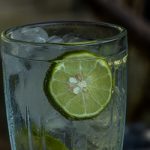By David Blyweiss, M.D., Advanced Natural Wellness
One thing I notice when it comes to health concerns is that most people don’t pay nearly enough attention to their eyesight.
This is a mistake.
Your eyesight is your key to independence. Once it starts to go, all sorts of things happen.
The most terrifying, of course, is losing your driver’s license. Suddenly you can’t go to the grocery store… you can’t get to the doctor if you have an emergency… you can’t even meet your friends for dinner.
You’re also likely to start limiting other activities… even ones as simple as putting away your clothes… because tripping and falling suddenly become big risks.
Now, the two nutrients most people think of first when it comes to their vision are lutein and zeaxanthin. These two carotenoids are concentrated in your macula where they help safeguard your eyesight.
This is important, because the macula protects your central sight from damaging blue light from the sun’s rays. It’s almost like having a pair of “internal sunglasses.” Lutein and zeaxanthin help the macula absorb those harmful light rays. They also act as powerful antioxidants to protect your eyes from free radical damage to keep your eyesight clear and focused.
Over time, if you aren’t getting enough lutein and zeaxanthin, the macular pigment of your eyes begins to thin and degenerate. And nothing good comes with that.
When your macula becomes damaged it can be difficult to work or read in dim-light conditions. Words become blurred and your central vision may become fuzzy or hazy, even when you’re looking at something right in front of you.
But when the macular pigment remains dense, it can help keep your vision sharp and eagle-eyed as you age. It’s the difference between being independent – able to read, drive and work as long as you want – or counting on others to “be your eyes.”
The good news is that when you take steps to maintain macular density you can retain your youthful eyesight longer. And getting plenty of lutein and zeaxanthin is your first line of defense.
But despite popular belief, these carotenoids aren’t the only nutrients your eyes are hungry for.
Why Your Eyes need more than Lutein and Zeaxanthin
I’ll bet you haven’t heard much about an amino acid called taurine. So you might be surprised to learn that it’s the most abundant amino acid in the retina, lens, cornea and iris of your eyes.
More importantly, taurine protects specialized cells that send the images you see to your brain. If you suffer from vision problems, it could be because these cells aren’t getting the protection they need. Taurine is also great for protecting against oxidative stress and supporting the eyes against retinal diseases.
Zinc is another nutrient that probably doesn’t strike you as “eye-food.” After all, most people take zinc to fight off colds. But it’s also important to the health of the retina.
You see, when you’re short on zinc it makes it harder for your eyes to adjust to the dark. This makes it hard to see things when you go from a well-lit area into a room that’s much darker.
And I have to say. It frightens me to think about what could happen when someone with this condition drives from a brightly-lit road onto one with low-light conditions.
Omega-3 fatty acids support healthy nerve cells in the retina by protecting against oxidative stress, inflammation and abnormal blood vessel formation. Alpha lipoic acid protects the DNA in the cells in your eyes and supports oxygen delivery to the tiny capillaries responsible for blood flow.
Even simple ingredients like vitamins A, C and E can make the difference when it comes to preserving our eyesight.
What to Feed Your Starving Eyes
Life would be easy if all of these nutrients came from a single food source. But they don’t.
Dark leafy greens like organic kale, turnip greens, collards, spinach and chard can all boost your lutein, zeaxanthin, vitamin A and vitamin C levels. You can get taurine from fish, shellfish, meat and lamb. Meat and lamb also contain zinc. So do pumpkin seeds, sesame seeds, cashews and lentils.
So if you want to protect your eyesight, it’s important to eat a wide variety of organic produce and clean animal proteins.
This makes a Mediterranean style diet – rich in omega-3 fatty acids, fresh fruits and vegetables, beans and nuts – a perfect way to protect your eyesight.
However, because many of today’s foods don’t have the vitamin, mineral and nutrient content that it once did, it’s also a good idea to supplement with a top-quality eye formula that will support all of your vision needs.
Look for one that contains lutein and zeaxanthin. But don’t stop there. Your starving eyes need much more than these two nutrients.
With that in mind, you’ll also want one that contains sight-saving taurine, zinc, omega-3 fatty acids, alpha lipoic acid and other eye supporting nutrients.
Remember… as you age your visual acuity can make the difference between the freedom of driving wherever you want to go… or being stuck at home and depending on others. So don’t take your eyesight for granted.
SOURCES:
Ripps H, et al Ripps H, Shen W. Review: Taurine: A “very essential” amino acid. Mol Vis. 2012; 18: 2673–2686.
Froger N, Jammoul F, Gaucher D, Cadetti L, Lorach H, Degardin J, Pain D, Dubus E, Forster V, Ivkovic I, Simonutti M, Sahel JA, Picaud S. Taurine is a crucial factor to preserve retinal ganglion cell survival. Adv Exp Med Biol. 2013;775:69-83.
Castelli V, Paladini A, d’Angelo M, Allegretti M, Mantelli F, Brandolini L, Cocchiaro P, Cimini A, Varrassi G. Taurine and oxidative stress in retinal health and disease. CNS Neurosci Ther. 2021 Apr;27(4):403-412.
Ugarte M, et al Ugarte M, Osborne NN, Brown LA, Bishop PN. Iron, zinc, and copper in retinal physiology and disease. Surv Ophthalmol. 2013 Nov-Dec;58(6):585-609.
Rasmussen HM, Johnson EJ. Nutrients for the aging eye. Clin Interv Aging. 2013; 8: 741–748.
Inman DM, et al Inman DM, Lambert WS, Calkins DJ, Horner PJ. α-Lipoic Acid Antioxidant Treatment… Retinal Ganglion Cell Death and Dysfunction. PLoS One. 2013; 8(6): e65389.



